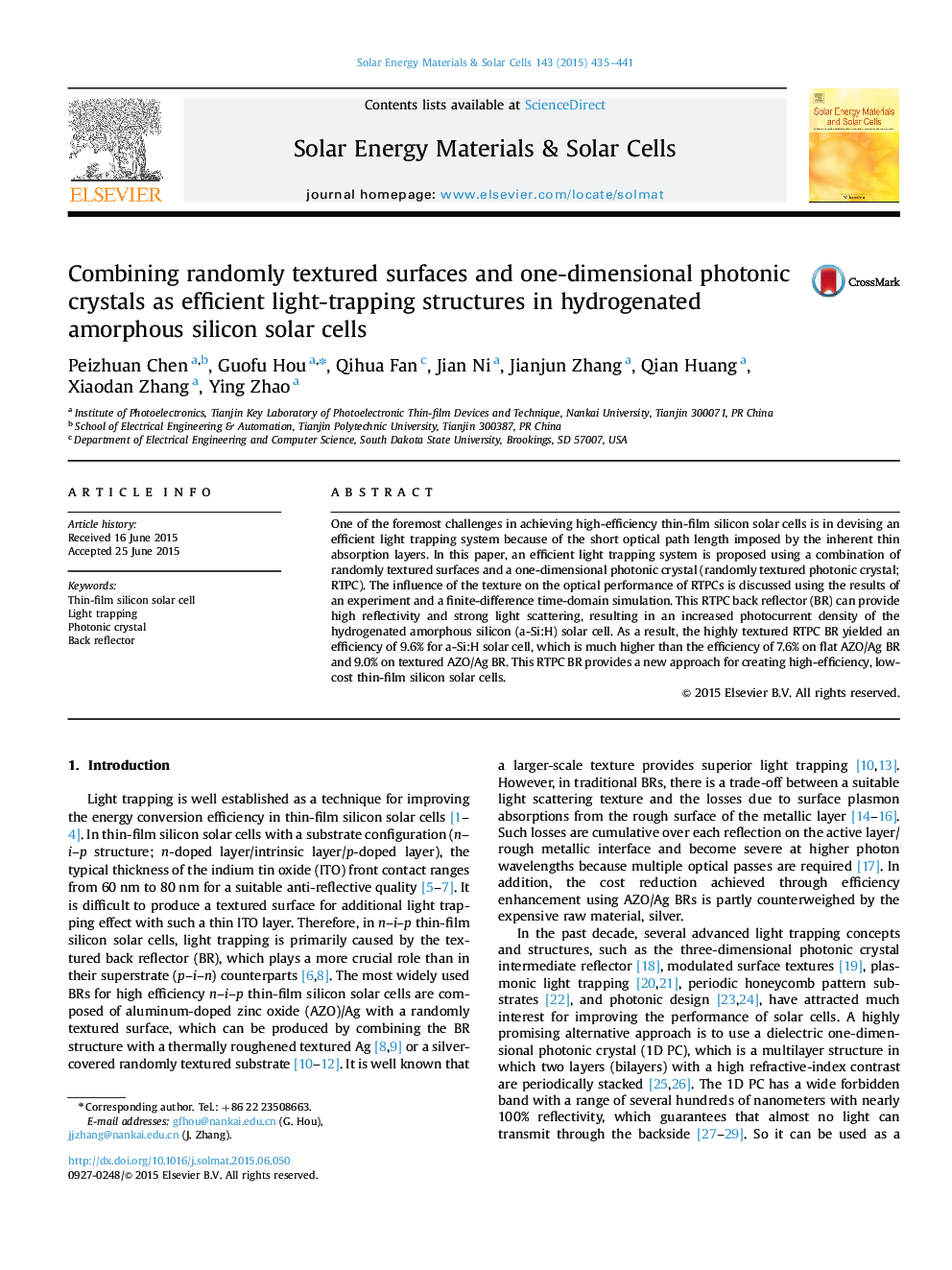| Article ID | Journal | Published Year | Pages | File Type |
|---|---|---|---|---|
| 6535094 | Solar Energy Materials and Solar Cells | 2015 | 7 Pages |
Abstract
One of the foremost challenges in achieving high-efficiency thin-film silicon solar cells is in devising an efficient light trapping system because of the short optical path length imposed by the inherent thin absorption layers. In this paper, an efficient light trapping system is proposed using a combination of randomly textured surfaces and a one-dimensional photonic crystal (randomly textured photonic crystal; RTPC). The influence of the texture on the optical performance of RTPCs is discussed using the results of an experiment and a finite-difference time-domain simulation. This RTPC back reflector (BR) can provide high reflectivity and strong light scattering, resulting in an increased photocurrent density of the hydrogenated amorphous silicon (a-Si:H) solar cell. As a result, the highly textured RTPC BR yielded an efficiency of 9.6% for a-Si:H solar cell, which is much higher than the efficiency of 7.6% on flat AZO/Ag BR and 9.0% on textured AZO/Ag BR. This RTPC BR provides a new approach for creating high-efficiency, low-cost thin-film silicon solar cells.
Related Topics
Physical Sciences and Engineering
Chemical Engineering
Catalysis
Authors
Peizhuan Chen, Guofu Hou, Qihua Fan, Jian Ni, Jianjun Zhang, Qian Huang, Xiaodan Zhang, Ying Zhao,
